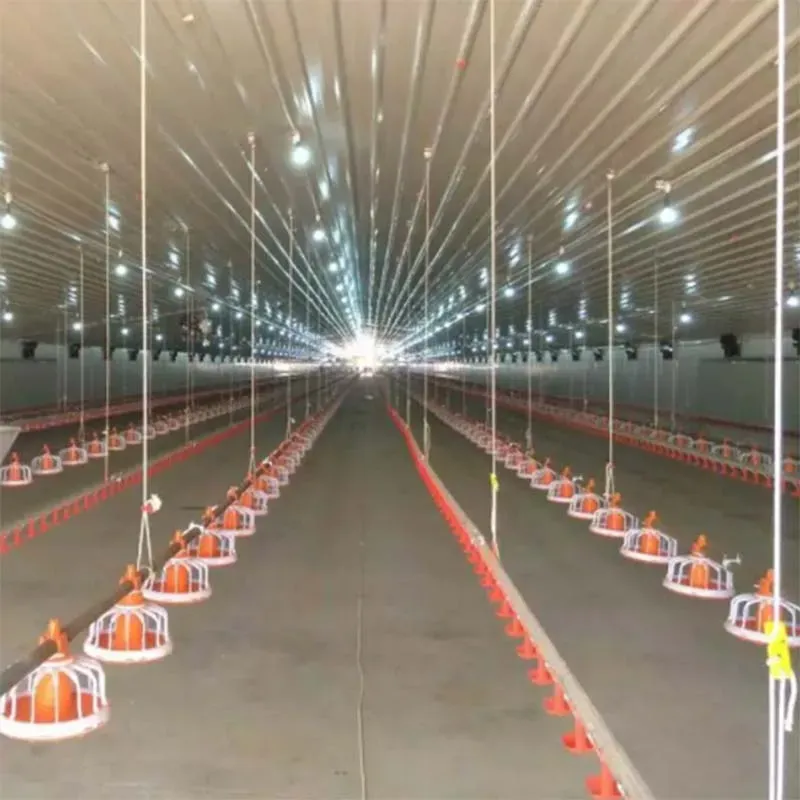feed pellet cooler
Nov . 13, 2024 15:24 Back to list
feed pellet cooler
Understanding Feed Pellet Coolers Essential Tools for Animal Feed Production
The animal feed industry plays a crucial role in ensuring the efficient production of feed materials for livestock and poultry. Among the various stages of feed manufacturing, cooling is a vital process that can significantly impact the quality and performance of feed pellets. One of the key pieces of equipment involved in this cooling process is the feed pellet cooler. This article delves into the significance of feed pellet coolers, their operational principles, benefits, and considerations for selecting the right one.
What is a Feed Pellet Cooler?
A feed pellet cooler is a specialized machine designed to reduce the temperature of hot, freshly produced pellets after the extrusion or pelleting process. When pellets exit the pellet mill, they are typically hot and contain moisture. Proper cooling ensures they reach a manageable temperature and moisture level, making them suitable for storage and feeding.
The Importance of Cooling
The cooling of feed pellets is essential for several reasons
1. Minimizing Nutrient Loss High temperatures can lead to the degradation of essential nutrients in the feed, such as vitamins and amino acids. Cooling helps preserve these critical components, ensuring the feed remains nutritious for livestock.
2. Preventing Spoilage Residual moisture in hot pellets can promote the growth of mold and bacteria if not eliminated. Cooling reduces moisture levels, minimizing the risk of spoilage and ensuring feed safety.
3. Improving Handling and Storage Cool pellets are easier to handle and process. They are less prone to clumping and can flow more freely through handling systems. Additionally, cooler pellets can be stored without the risk of excess moisture leading to mold growth.
4. Enhancing Pellet Quality Cooling processes help maintain pellet integrity. It reduces the likelihood of fines and breakage during transport and storage, which can be detrimental to feed quality.
How Do Feed Pellet Coolers Work?
Feed pellet coolers typically operate using air or water as cooling mediums. The most commonly used type is the counterflow cooler, which uses ambient air to absorb heat from the pellets. Here’s a brief overview of how they function
1. Pellet Entrance Hot pellets enter the cooler from the pellet mill. The design often allows for a continuous flow of pellets through the cooling chamber.
feed pellet cooler

2. Cooling Process Ambient air is drawn into the cooler and passes over the hot pellets. The counterflow design ensures that the air moves in the opposite direction to the pellets, maximizing heat transfer efficiency.
3. Moisture Reduction As the air heats up, it absorbs moisture evaporating from the pellets, which is then expelled from the system, allowing for the effective drying of the pellets.
Choosing the Right Feed Pellet Cooler
When selecting a feed pellet cooler, several factors should be considered
1. Production Capacity Choose a cooler that can handle the desired output of your pellet mill to ensure seamless operation.
2. Cooling Efficiency Look for models designed for optimal heat exchange and moisture removal to enhance pellet quality.
3. Space and Layout Consider the available floor space in your facility and the cooler’s dimensional requirements for harmonious integration into the production line.
4. Energy Consumption Energy-efficient models can significantly reduce operating costs over time, making them a preferable option.
5. Maintenance and Durability Ensure that the cooler is constructed of high-quality materials and is easy to maintain, promoting long-term reliability.
Conclusion
In summary, feed pellet coolers are indispensable in the feed production industry, contributing to the quality, safety, and efficacy of animal feed. By reducing temperatures and moisture levels in freshly produced pellets, these coolers help preserve vital nutrients and maintain structural integrity. With careful consideration of the various factors involved, producers can choose the right cooler to optimize their operations, ensuring better outcomes for livestock health and productivity. Investing in a high-quality feed pellet cooler is a critical step toward improving the overall quality of animal feed.
-
Automatic Feeding Line System-Pan Feeder Nipple Drinker|Anping County Yize Metal Products Co., Ltd.
NewsJul.29,2025
-
Hot Sale 24 & 18 Door Rabbit Cages - Premium Breeding Solutions
NewsJul.25,2025
-
Automatic Feeding Line System Pan Feeder Nipple Drinker - Anping County Yize Metal Products Co., Ltd.
NewsJul.21,2025
-
Automatic Feeding Line System Pan Feeder Nipple Drinker - Anping County Yize Metal Products Co., Ltd.
NewsJul.21,2025
-
Automatic Feeding Line System - Anping Yize | Precision & Nipple
NewsJul.21,2025
-
Automatic Feeding Line System - Anping Yize | Precision & Nipple
NewsJul.21,2025






